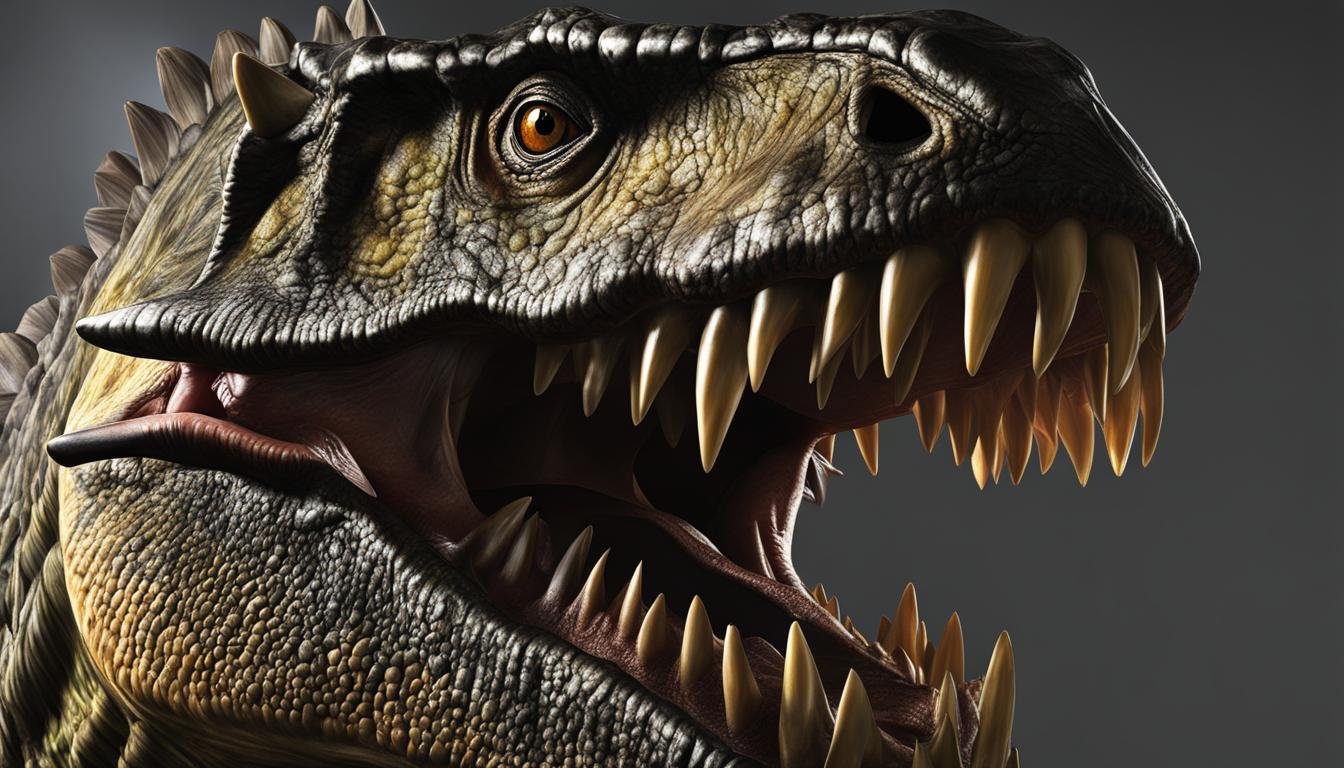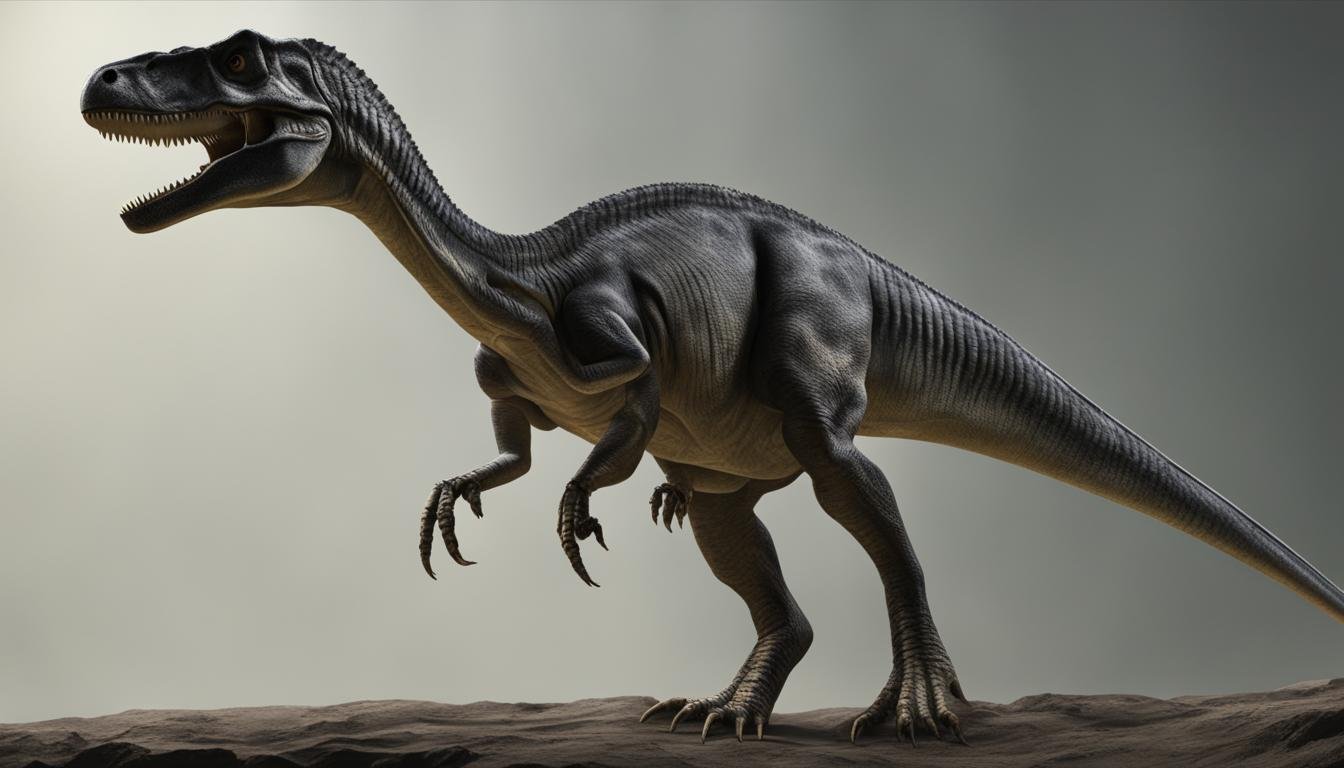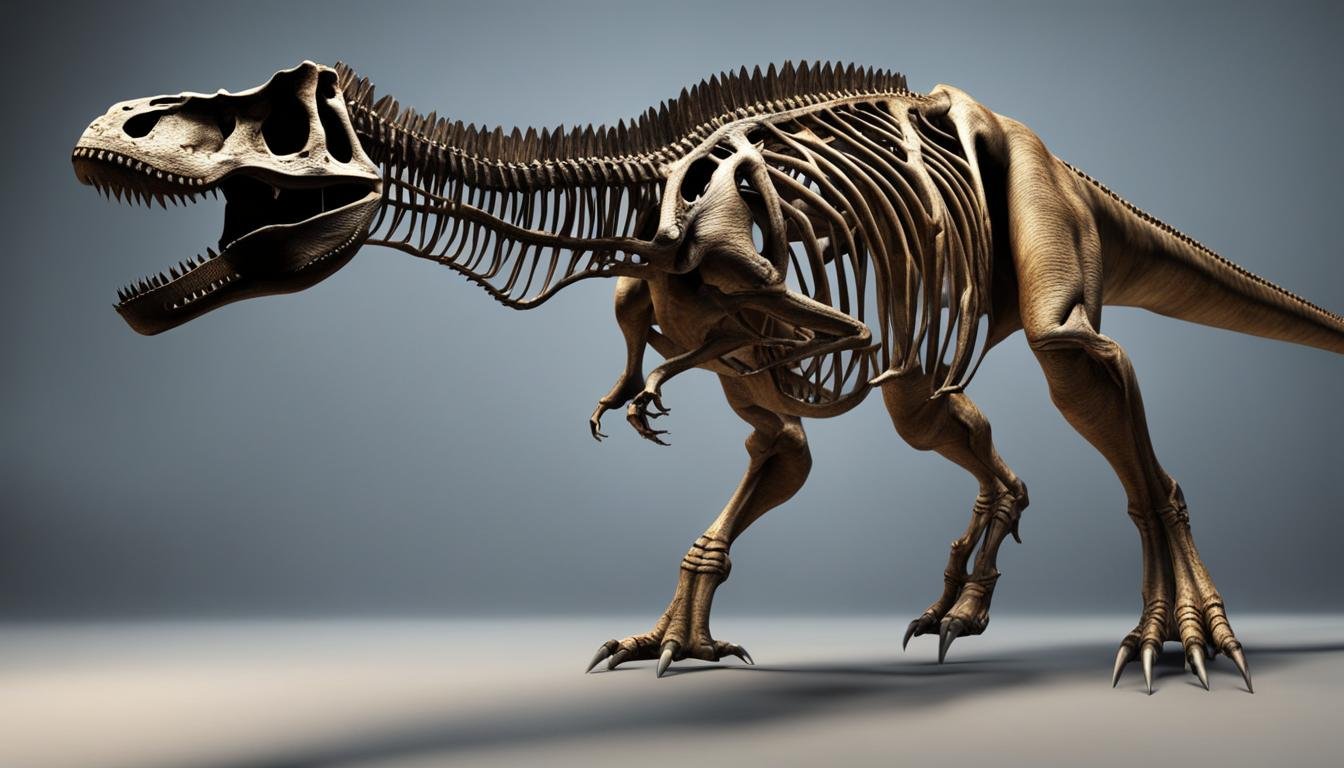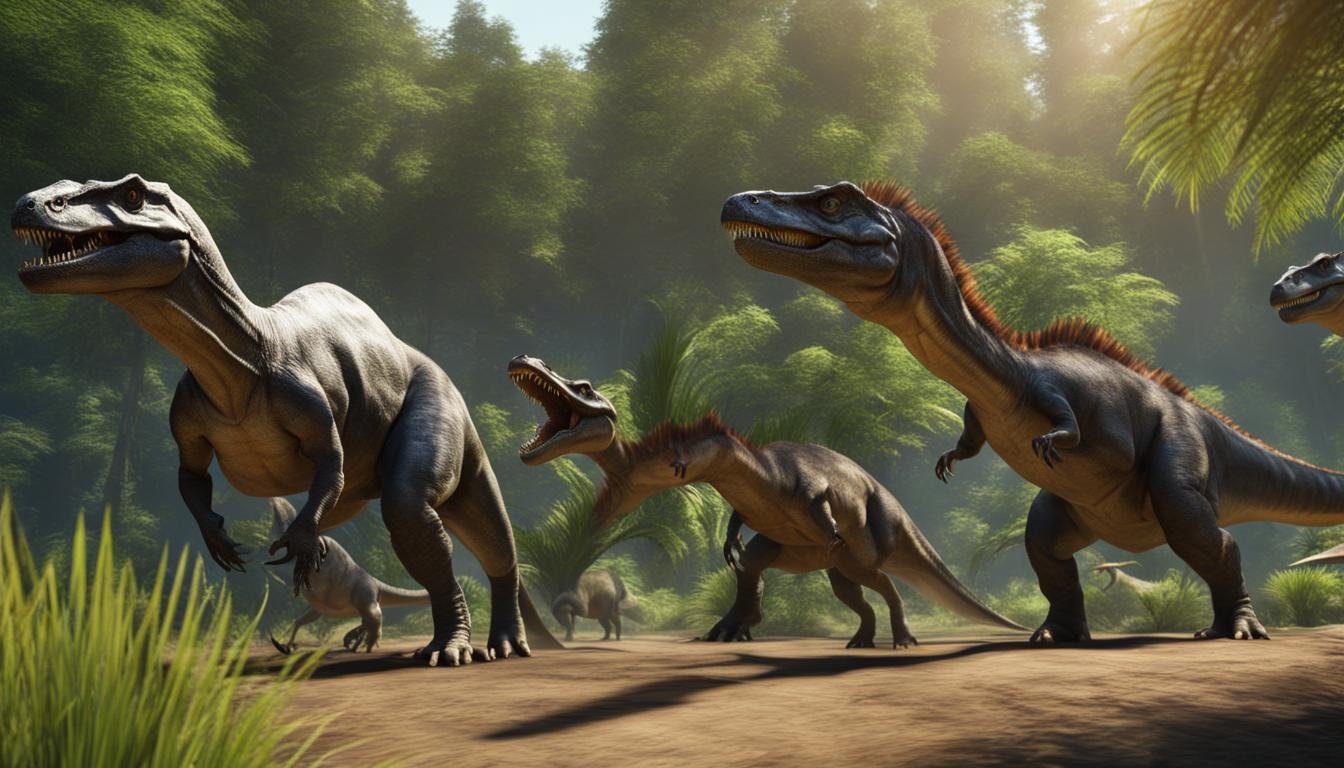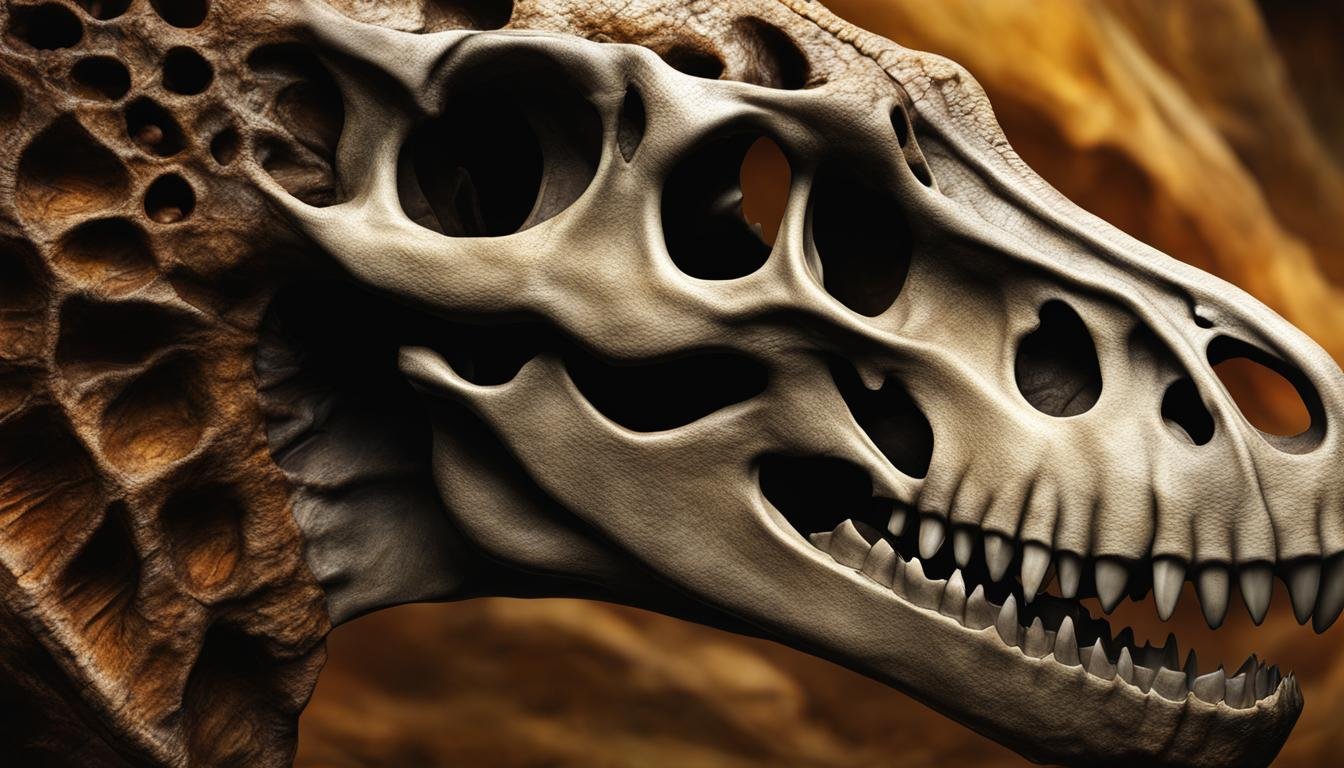Dinosaur teeth were not just unique and fascinating structures, but also essential for the survival and success of these prehistoric creatures. Their dental adaptations played a crucial role in determining their diet, jaw mechanics, and overall dental health. Let’s explore the fascinating world of dinosaur teeth and discover the secrets they hold.
Types of Dinosaur Teeth
Dinosaurs had a fascinating variety of teeth, each adapted to their unique diet and feeding habits. Let’s explore the different types of dinosaur teeth and how they influenced these prehistoric creatures.
Incisors and Canines
Some dinosaurs, like the Tyrannosaurus rex, had large and serrated teeth, known as incisors and canines, designed for tearing flesh. These sharp and pointed teeth allowed carnivorous dinosaurs to efficiently capture and slice through their prey.
Molars and Premolars
On the other hand, herbivorous dinosaurs evolved specialized teeth called molars and premolars. These teeth had flat grinding surfaces, equipped to process tough plant material. The molars and premolars of herbivorous dinosaurs had ridges and cusps that helped them break down vegetation and extract nutrients.
Beak Structures and Diastema
Some dinosaurs, like the Triceratops, had beak-like structures similar to modern birds. These beak structures were used to strip leaves and grasp vegetation. Additionally, some dinosaurs had gaps in their teeth called diastema, which allowed them to separate different food items while still maintaining a strong bite force.
Dental Specialization
Each type of dinosaur tooth played a specific role in their feeding behavior, allowing them to survive and thrive in their respective environments. Dental specialization was a key adaptation that helped dinosaurs effectively process their food sources.
| Dinosaur Type | Teeth | Specialization |
|---|---|---|
| Carnivorous | Sharp, serrated incisors and canines | Tearing flesh |
| Herbivorous | Flat molars and premolars with ridges | Grinding plant material |
| Omnivorous | Combination of different tooth types | Eating both plants and animals |
Understanding the types of dinosaur teeth gives us valuable insights into their dietary preferences and the diverse range of adaptations that evolved throughout their existence.
Tooth Replacement in Dinosaurs
One intriguing aspect of dinosaur dentition is their continuous tooth replacement. Similar to modern reptiles, dinosaurs had the ability to shed and replace their teeth throughout their lives. This constant tooth turnover was essential for maintaining functional teeth and ensuring proper feeding habits.
Dinosaur teeth would erupt from the jawbone to replace the worn or lost teeth. The process of tooth eruption and replacement varied among different dinosaur species, but it generally involved the gradual emergence of new teeth as the old ones were shed. This allowed dinosaurs to maintain a functional set of teeth for efficient feeding.
The fossil record provides evidence of tooth replacement in dinosaurs through the discovery of teeth in various stages of development. Some teeth would be in the process of eruption, while others would be fully erupted and functional. This allows scientists to study the timing and pattern of tooth replacement in different species, providing valuable insights into the dental health of dinosaurs.
| Dinosaur Species | Pattern of Tooth Replacement |
|---|---|
| Tyrannosaurus rex | Continuous tooth replacement |
| Triceratops | Sequential tooth replacement |
| Stegosaurus | Simultaneous tooth replacement |
Additionally, the fossilized teeth of dinosaurs have provided insight into dental diseases that affected these ancient creatures. Some teeth display signs of infections, abscesses, or other pathologies that could have impacted the dinosaur’s ability to feed. The study of dental diseases in dinosaurs contributes to our understanding of their overall health and well-being.
Dental Adaptations in Herbivorous Dinosaurs
Herbivorous dinosaurs had unique dental adaptations to process vegetation efficiently. Their teeth often showed distinct wear patterns due to the repetitive grinding motion used in chewing. These adaptations allowed them to extract maximum nutrition from plant material and survive in diverse ecosystems.
“By studying the wear patterns on fossilized teeth, we can determine the types of plants these dinosaurs consumed and the chewing mechanics they employed. This information helps us reconstruct the diets of herbivorous dinosaurs and understand how they coexisted with other plant-eating species.”
The teeth of herbivorous dinosaurs were well-adapted to handle the high amounts of plant material in their diets. They had specialized grinding surfaces, such as ridges and crests, that allowed them to break down tough plant fibers effectively. Additionally, these dinosaurs had ongoing tooth development, with new teeth continuously replacing worn-out ones. This tooth replacement process ensured that they always had functional teeth for efficient food processing.
| Dental Wear Patterns | Chewing Mechanics | Tooth Development | Dental Diseases |
|---|---|---|---|
| Distinct wear patterns due to grinding motion | Efficient breakdown of tough plant fibers | Ongoing tooth development for continuous tooth replacement | Occurrence of dental diseases related to diet and chewing |
The dental wear patterns in herbivorous dinosaurs can be observed on their fossilized teeth, providing direct evidence of their feeding behaviors. These wear patterns also help distinguish herbivorous dinosaurs from other types, such as carnivorous dinosaurs, whose teeth exhibit different characteristics. By studying these dental adaptations, paleontologists gain valuable insights into the ecological roles and evolutionary history of herbivorous dinosaurs.
Dental Adaptations in Carnivorous Dinosaurs
Carnivorous dinosaurs, also known as theropods, possessed unique dental adaptations that helped them thrive as apex predators. Their tooth morphology and biting force were finely tuned for slicing through flesh and efficiently capturing and consuming their prey. let’s take a closer look at these fascinating dental adaptations.
Tooth Morphology
The teeth of carnivorous dinosaurs were typically sharp, pointed, and serrated. This tooth shape allowed for effective piercing and tearing of flesh, enabling them to incapacitate their prey. The serrations on the edges of the teeth acted like saw blades, aiding in cutting through tough tissues. This optimized tooth morphology ensured maximum efficiency in capturing and processing food.
Biting Force
Carnivorous dinosaurs had powerful jaw muscles and high biting forces, allowing them to deliver strong and precise bites. This biting force was crucial in subduing and immobilizing their prey. The combination of sharp teeth and immense biting force made these dinosaurs formidable hunters in their ecosystems.
Dental Diseases
Examining fossilized teeth of carnivorous dinosaurs has provided insights into their dental health and the potential presence of dental diseases. Some fossilized teeth show evidence of tooth decay, abscesses, or other dental anomalies. These findings suggest that dental diseases were not uncommon among carnivorous dinosaurs and may have influenced their feeding behavior and overall health.
| Types of Carnivorous Dinosaurs | Characteristic Tooth Morphology |
|---|---|
| Tyrannosaurus rex | Massive, conical teeth with serrations |
| Velociraptor | Curved, recurved teeth with serrations |
| Spinosaurus | Long, needle-like teeth with serrations |
As shown in the table above, different types of carnivorous dinosaurs exhibited variations in tooth morphology to suit their specific hunting styles and prey preferences.
Overall, the dental adaptations of carnivorous dinosaurs played a crucial role in their survival and success as top predators. The combination of sharp, serrated teeth, powerful biting forces, and the ability to inflict fatal wounds allowed these dinosaurs to dominate their ecosystems. Further research into the dental remains of carnivorous dinosaurs continues to unveil new insights into their fascinating adaptations and lifestyles.
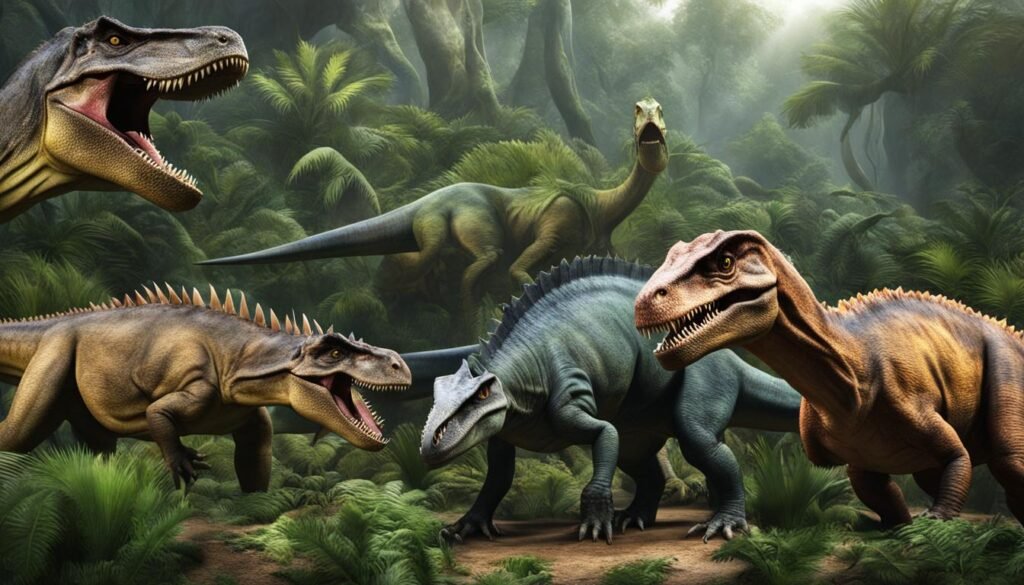
Dental Adaptations in Omnivorous Dinosaurs
Omnivorous dinosaurs had unique dental adaptations that allowed them to consume both plants and animals. Their tooth morphology was a combination of features seen in herbivores and carnivores, enabling them to adapt to a varied diet. These dinosaurs possessed grinding surfaces for processing plant material and beak-like structures for capturing and processing small prey.
The tooth morphology of omnivorous dinosaurs showcased a balance between sharp and serrated teeth for tearing flesh and flat grinding surfaces for processing vegetation. They had different types of teeth specialized for different functions. For example, some teeth were sharp and pointed, while others were broad and flat. This dental specialization allowed omnivorous dinosaurs to efficiently process a wide range of food sources.
One notable dental adaptation in omnivorous dinosaurs was the presence of beak structures. These beaks, similar to those seen in birds, helped these dinosaurs in gripping and manipulating their food. The beaks also provided additional support for capturing and processing small prey. This dental specialization in omnivorous dinosaurs allowed them to exploit a wide variety of food resources, making them adaptable and successful in their ecosystems.
Dental Specialization in Omnivorous Dinosaurs
The dental specialization in omnivorous dinosaurs can be observed by looking at specific examples. One such example is the Heterodontosaurus, a small dinosaur known for its distinct teeth. It had enlarged canines and incisors in the front of its mouth, which were used for grasping and tearing food. These teeth were accompanied by smaller, blunt molars towards the back of the mouth for grinding plant material. This combination of tooth morphology and dental specialization allowed the Heterodontosaurus to effectively consume both plants and small prey.
| Dinosaur Species | Tooth Morphology | Dental Specialization |
|---|---|---|
| Heterodontosaurus | Enlarged canines and incisors, smaller molars | Grasping and tearing food, grinding plant material |
| Othnielosaurus | Mixed tooth shapes (sharp and flat) | Efficient prey capture and vegetation processing |
| Segisaurus | Diverse tooth types (sharp and serrated) | Versatile feeding abilities |
In summary, omnivorous dinosaurs exhibited dental adaptations that allowed them to thrive on a mixed diet of plants and animals. Their tooth morphology and dental specialization enabled them to efficiently process food sources, including grinding vegetation and capturing small prey. The presence of beak structures further enhanced their feeding capabilities. The study of dental adaptations in omnivorous dinosaurs provides valuable insights into the diverse ways these ancient creatures adapted to their environments and secured their survival.
Dental Evolution in Dinosaurs
The study of dental evolution in dinosaurs, known as paleodontology, provides valuable insights into how their teeth changed over time. By examining dental fossils, researchers can observe the development of new tooth features, changes in tooth morphology, and occlusion patterns. This information gives us a deeper understanding of the evolution and diversification of dinosaurs’ dental adaptations.
Dental evolution in dinosaurs can be traced through the fossil record, which reveals a gradual transformation of tooth structures and functions. For example, early dinosaurs had simple conical teeth, but as they evolved, some developed more complex tooth shapes with serrations or ridges. These dental adaptations likely corresponded to changes in diet and feeding behaviors.
One notable aspect of dental evolution in dinosaurs is the development of occlusion patterns. Occlusion refers to how the upper and lower teeth fit together when the jaw is closed. By analyzing the wear patterns on fossilized teeth, scientists can reconstruct the occlusion patterns of different dinosaur species. This information provides insights into how dinosaurs processed their food and the forces exerted on their teeth during feeding.
| Dental Evolution in Dinosaurs | Paleodontology | Occlusion Patterns |
|---|---|---|
| Dental fossils reveal changes in tooth features and morphology | The study of dental evolution in dinosaurs | Analyzing wear patterns to reconstruct occlusion |
| Gradual transformation of tooth structures | Insights into the evolution and diversification of dental adaptations | Understanding how dinosaurs processed their food |
| Development of tooth shapes with serrations or ridges | Correspondence to changes in diet and feeding behaviors | Forces exerted on teeth during feeding |
Overall, the study of dental evolution in dinosaurs allows us to piece together the story of how these ancient creatures adapted their teeth to meet the demands of their changing environments. By understanding the dental adaptations of dinosaurs, we gain insights into their dietary preferences, feeding strategies, and ultimately their survival in the prehistoric world.
Importance of Dental Research in Understanding Dinosaurs
Dental research plays a crucial role in our understanding of dinosaurs and their biology. Fossilized teeth, in particular, provide valuable insights into various aspects of dinosaur life, such as diet, jaw mechanics, dental health, dental diseases, and food processing.
By examining the fossilized teeth of dinosaurs, scientists can gather information about the types of food they consumed. For example, the shape, size, and arrangement of teeth can indicate whether a dinosaur was an herbivore, carnivore, or omnivore. The presence of distinct dental wear patterns can reveal the grinding and chewing mechanisms used to process their food.
Dental research also sheds light on the dental health of dinosaurs. By studying the fossilized teeth, scientists can identify dental diseases that affected these ancient creatures. These findings provide valuable insights into the overall health and well-being of dinosaurs and help us gain a deeper understanding of their lives.
Furthermore, dental research allows us to explore the jaw mechanics of dinosaurs. By analyzing the structure of their teeth and jaws, scientists can infer the biting force and food processing techniques employed by different dinosaur species. This knowledge provides insights into the ecological roles and feeding behaviors of dinosaurs, contributing to our understanding of their overall biology.
| Dental Research Insights | Significance |
|---|---|
| Dietary preferences and adaptations | Understanding the ecological roles and feeding behaviors of dinosaurs |
| Dental wear patterns | Reconstructing the food processing techniques of dinosaurs |
| Dental diseases | Providing insights into the overall health and well-being of dinosaurs |
| Jaw mechanics | Inferring biting force and food processing techniques |
As our knowledge of dental adaptations in dinosaurs continues to grow, so does our understanding of these fascinating creatures. Dental research enables us to reconstruct the past, unraveling the mysteries of dinosaur life and contributing to a more comprehensive picture of their existence on Earth.
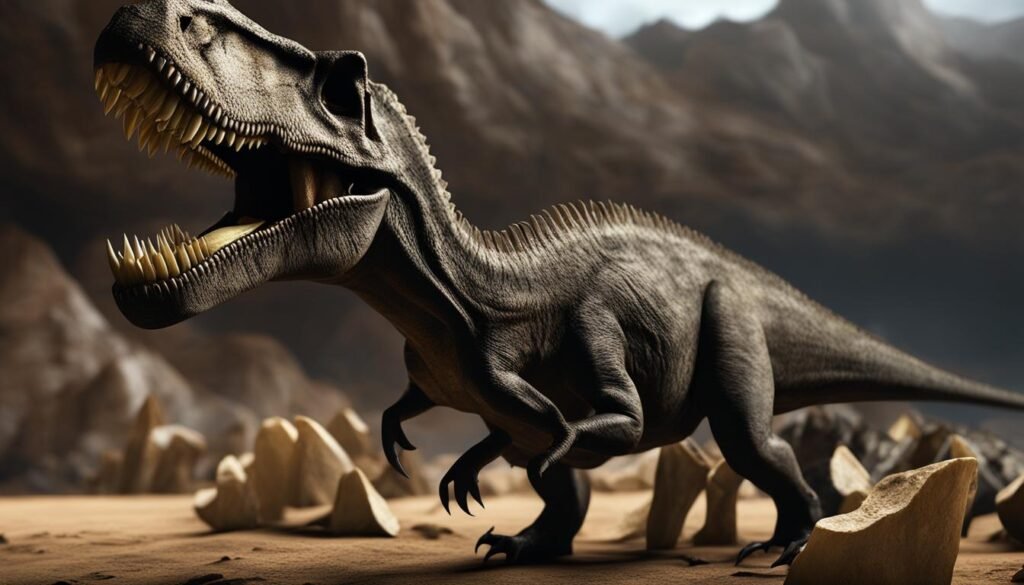
Conclusion
The study of dinosaur teeth and dental adaptations provides valuable insights into their feeding behavior, tooth evolution, and overall biology. These dental adaptations played a crucial role in the survival and success of these prehistoric creatures.
From sharp and serrated teeth in carnivorous dinosaurs to specialized grinding surfaces in herbivores, the diversity of dental adaptations among dinosaurs is fascinating. These adaptations allowed dinosaurs to thrive in various ecological niches and exploit a wide range of food sources.
Continued research in this field will further illuminate the mysteries surrounding the dietary habits and dental health of dinosaurs. By studying dental fossils, scientists can continue to uncover new insights into dinosaur feeding behavior and tooth evolution.
Understanding the dental adaptations of dinosaurs not only helps us piece together their ancient world but also provides a deeper understanding of the evolutionary processes that shaped these remarkable creatures

